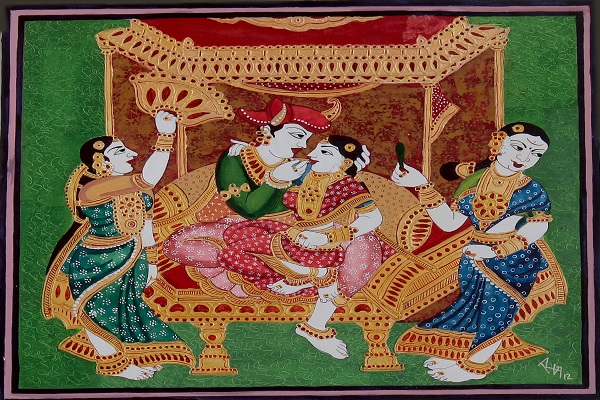Forms of Modern Art – From Realism to Abstract

The great range of available modes of expression is part of the appeal of painting in the twenty-first century, especially in the sketch art gallery-like Indian Art Ideas. Artists made tremendous breakthroughs in painting techniques in the late 19th and early 20th centuries. Technological advancements, such as the invention of the metal paint tube and the evolution of photography, as well as changes in social customs, politics, and philosophy, as well as international events, inspired many of these innovations.
Objects keep their realism while displaying a vibrancy that is peculiar to this style. It’s hard to think that most critics despised and mocked the Impressionists’ art when they first showed it.
Realism Modern Art
Many people consider realism to be “genuine art,” in which the topic of the painting is depicted as closely as possible to the real object rather than being stylized or abstracted. What appear to be solid colors are actually a sequence of brushstrokes of various colours and intensities when studied closely.
Since the Renaissance, realism has been the most popular painting style. The artist employs perspective to create a sense of space and depth, composing and lighting the subject in such a way that it appears real. The “Mona Lisa” by Leonardo da Vinci is a classic example of the style.
Painterly
As Europe was overwhelmed by the Industrial Revolution in the early part of the nineteenth century, the Painterly style emerged. Subjects were realistically shown, but painters made no attempt to conceal their technical skills.
The focus is on the act of painting: the quality of the brushwork and the pigments themselves, as the title suggests. Henri Matisse’s paintings are superb examples of this style.
Impressionism
Impressionism began in Europe in the 1880s. This is when artists like Claude Monet strove to portray light via gesture and illusion rather than realism. The vivid strokes of color in Monet’s water lilies and Vincent Van Gogh’s sunflowers are well created. May be seen without getting too near, yet there’s no mistaking what you’re looking at.
Objects keep their realism while displaying a vibrancy that is peculiar to this style. It’s hard to think that most critics despised and mocked the Impressionists’ modern art when they first showed it.
Impressionism & Fauvism
Expressionism & Fauvism were seen in galleries in the 20th Century.
In other aspects, the two styles are dissimilar. Expressionists like Edvard Munch used hyper-stylized brushwork and horrible motifs to depict the bizarre and terror of everyday life, as shown in his painting “The Scream.”
Despite their innovative use of color, the Fauvists aimed to create compositions that reflected life in an idealized or exotic environment. Consider the frolicking dancers of Henri Matisse or the pastoral settings of George Braque.
Abstraction
Painting became less realistic as the first decades of the twentieth century unfolded in Europe and America. Abstraction is about painting the core of a subject, rather than the observable features, as the artist interprets it. As Pablo Picasso did with his renowned mural of three musicians, a painter can compress the subject to its prominent colours, shapes, or patterns. The performers, with their crisp lines and angles, don’t appear to be real, but there’s no mistaking who they are.
Photorealism
In the late 1960s and early 1970s, Photorealism arose as a reaction to Abstract Expressionism, which had dominated art since the 1940s. This style often appears more real than reality, with no detail overlooked and no flaw overlooked.
To effectively reproduce specific details, some artists project pictures onto a canvas. Others enlarge a print or photo freehand or with the help of a grid system-Articleswork.


